Hello, everyone, how are you doing? This is Uri, head coach of Guerrilla Poker. Today, I'm going to continue on with two of the strongest 6-max players in the world right now, Linus and Stefan. They play in a very different style: Stefan is very strongly exploitative, beats everyone and never changes his style, while Linus is just a GTO boss. Their confrontation is very interesting to me, I hope it is for you too.
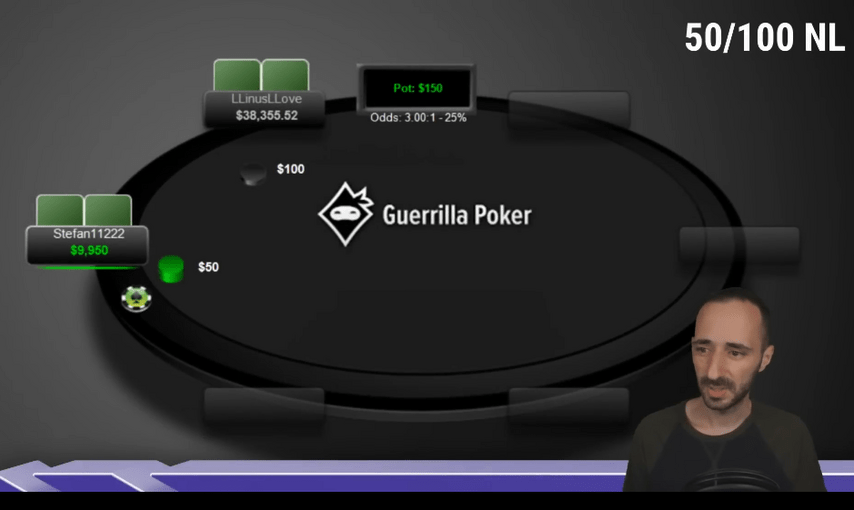
$50/$100. Stefan raises $265. Linus calls. So far, pretty standard. Note that even though Linus has almost 400 blinds in his stack, the effective stack is 100 blinds.
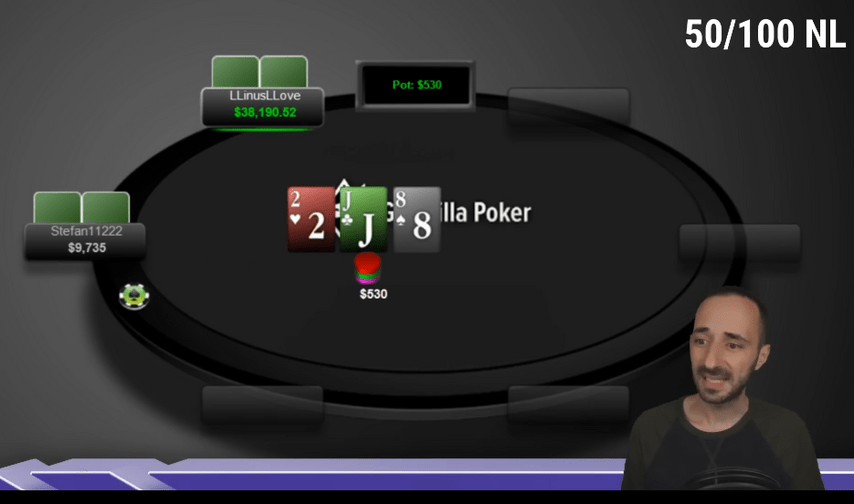
Linus checks. Stefan bets half the pot, $264. Linus calls. What can we say about this? Let's try to outline Stefan's range with which he bets half the pot. Usually when people make a very small continuation bet, all or almost all of their hands are in their range. The larger their sizing gets, the more defined the range becomes, because for more hands that sizing is unfavorable or unsuitable. Half pot on the flop , in my opinion, you can bet with a jack, and with an eight, and with a deuce. Ax like ? Probably not. I'm not an expert heads-up and can't say that I know exactly which hands are the cutoff, but I assume that many A-highs and K-highs are taken out of the c-bet range. With pocket pairs, it makes sense to check, perhaps only with sevens – pairs from threes to sixes are better to bet.
I always, on every street, try to think about how my opponent's range changes after his last action. Assuming that A-high and K-high are missing from Stefan's range due to this sizing, the game can become very interesting if an ace or king hits on the turn or river.
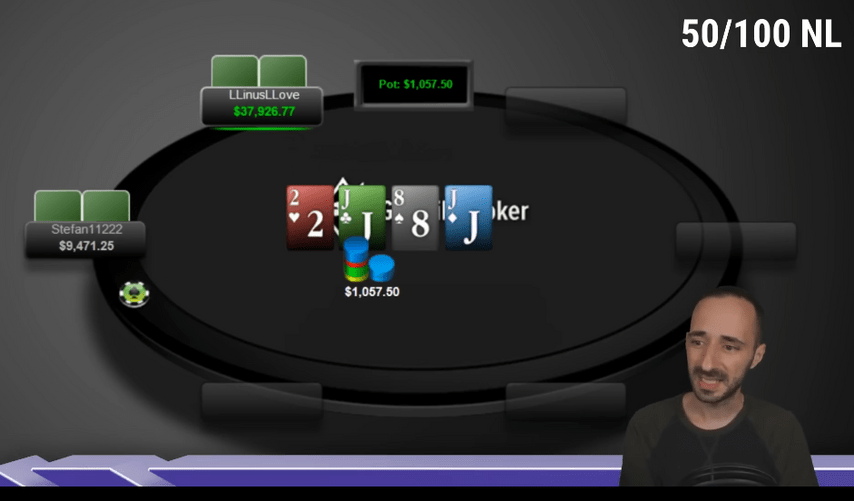
The turn is another jack, and Linus donk bets 10% of the pot – $100. Haha!
What does a 10% pot bet say? “You bet half the pot on the flop, so you didn’t c-bet your entire range. I called. The jack on the turn changes things a bit: firstly, none of your bluffs have improved, so you have too many bluffs, and secondly, the changing of the nuts has reduced the value of your overpairs. Considering that Linus's range, who called on the flop, should have more hands with showdown value, Linus tries to put pressure on his opponent – hands like, say, Q5. Prevents them from realizing equity!
Stefan calls.
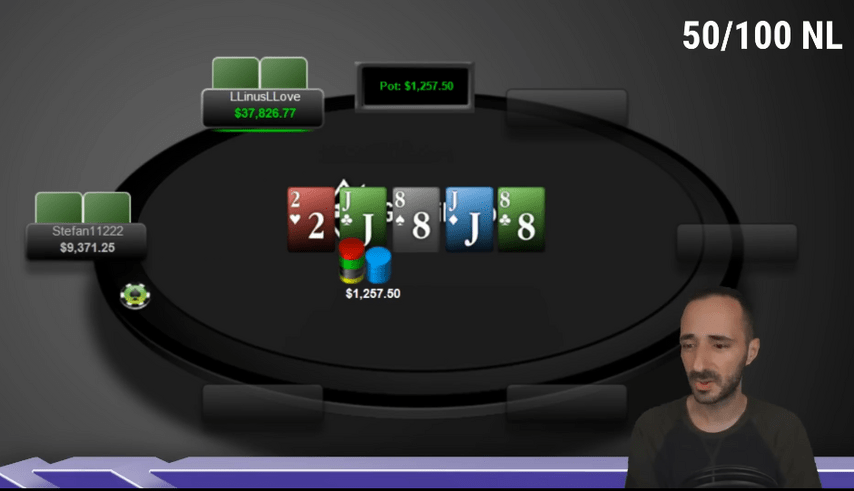
Unique runout. All pocket pairs from and below, as well as most have lost all value. And indeed, this card dramatically changes the situation. It is really very rare... and the rarer this or that situation occurs, the more serious mistakes players make. It will be very interesting to see what these two gentlemen do. It's easy to over-bluff or under-bluff here, and it's easy to misjudge the relative strength of your hand. No one has experience with such runouts.
Linus starts with a pot and a half, $1,757. In my opinion, you can play like this for value, with, perhaps, from a full house. Or maybe with hands that hit A high?
Stefan calls.
Linus shows A-high.
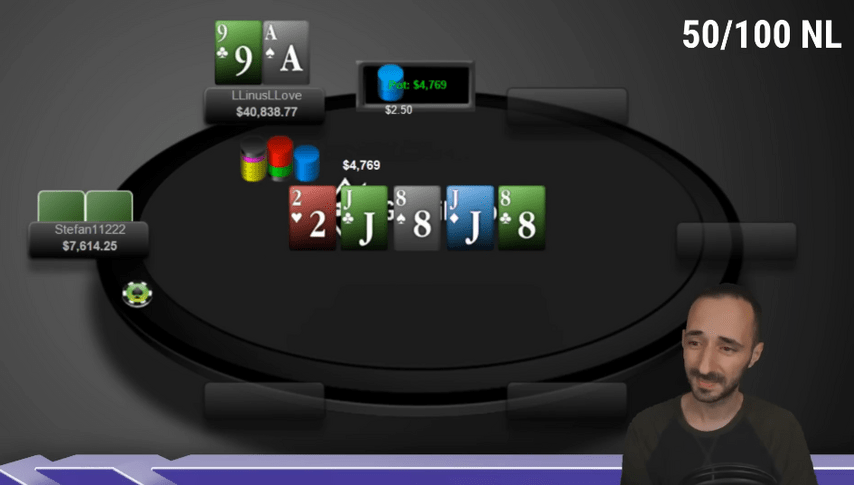
Boom! The pot goes to him. Very, very unexpected. Stefan supposedly called with K-high or Q-high, these hands are equal in strength and differ only in blockers, because Linus will bluff with , etc.
I don't have any experience in this spot either, I can only guess. Therefore, let's turn to the solver. For a long time I did not include it on this channel! I will try to make its use as clear as possible for those who are not familiar with such software.
Starting to analyze the hand with the solver, we first lay out the ranges for each of the players. These ranges will never be absolutely accurate. Even Stefan's preflop raise size is slightly unusual – I've never tested it. So I'm starting from a similar range and hope it gives us at least a rough idea of what's going on.
Below we see the range with which the solver cbets half the pot on the flop.
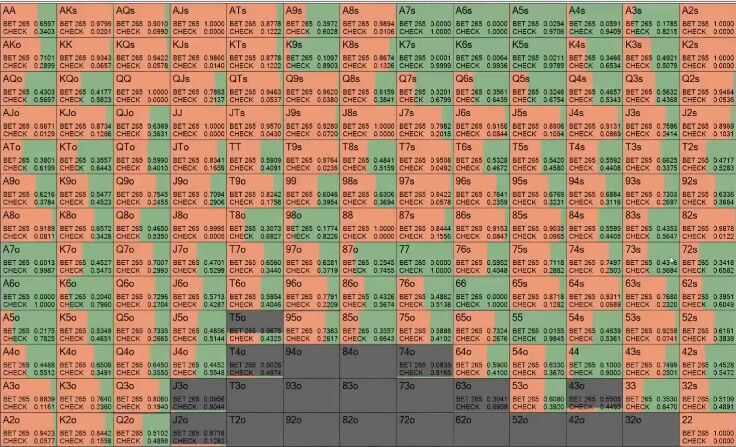
In general, this is similar to what I said. Sevens, sixes, fives, fours and most of the threes do not c-bet (green is a check). Given that the computer cbets 60% of the range and mixes with many hands, it's especially important to note hands that play clean strategy. For example, and they always c-bet, obviously. And what, besides the small pairs we mentioned, checks? A-high from and below and part of suited K-high with low kickers. There are some hands that behave a little unexpectedly, for example, 98o mostly checks, and 98s mostly bets, but we will not dwell on this – such a deep dive only makes sense at the level of super high rollers. It is better to spend your energy on solving much more important issues.
Linus' strategy for a half-pot c-bet:
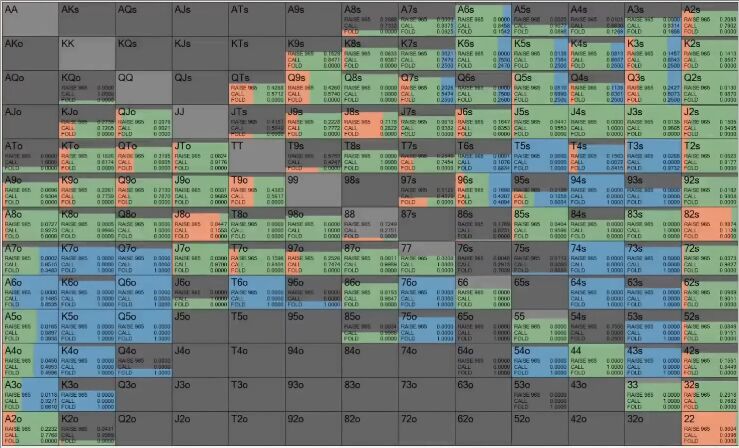
He called with , the solver approves.
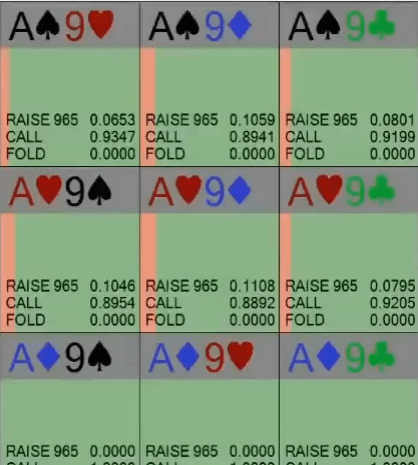
On the turn, I gave the solver the opportunity to donk bet 10% of the pot, and look how much he liked it!
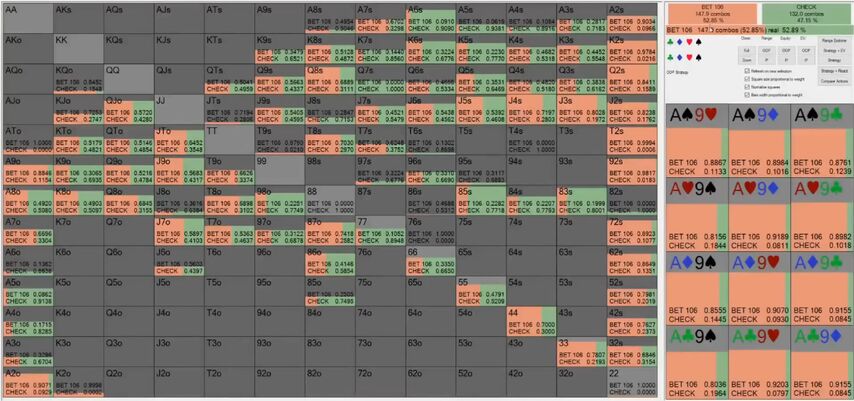
On a pairing of the jack, he blocks the turn half the time, and on a pairing of the eight, almost always. Also, more or less often, this sizing is chosen for a repeat deuce and for straight cards, except for a queen.
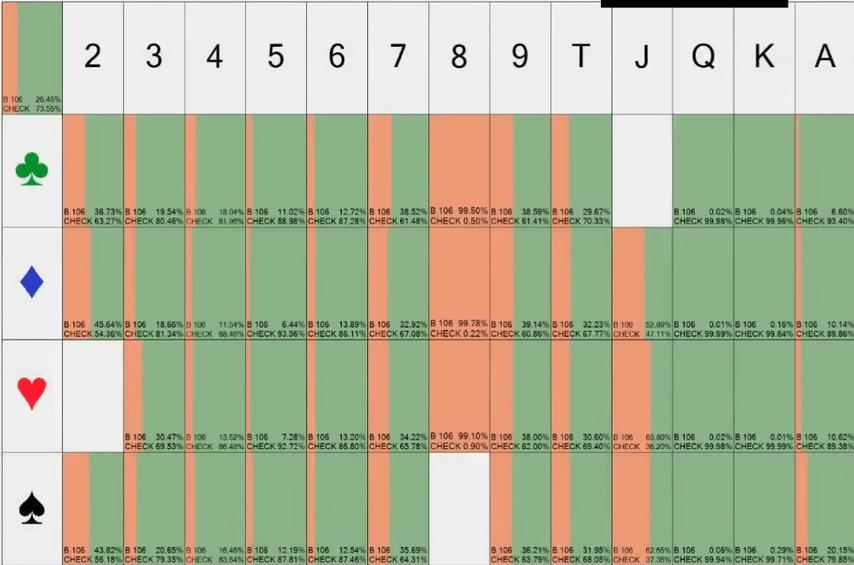
All of these cards have one thing in common: they change the hand asymmetrically, depriving Stefan of the advantage with the nuts. As I said, after check-calling our range is stronger in absolute terms, but weaker in terms of the nuts, so we need these cards to equalize the situation at the top of the spectrum.
Linus' hand – donks very often. This sizing suits him pretty well.
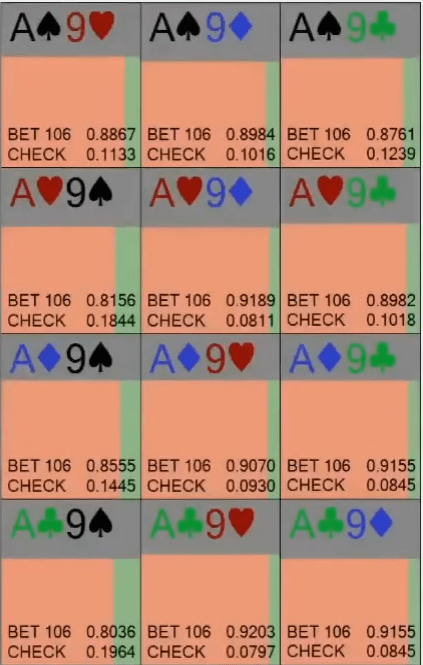
Stefan needs to raise a lot in response to a donk bet, although he also has folds.
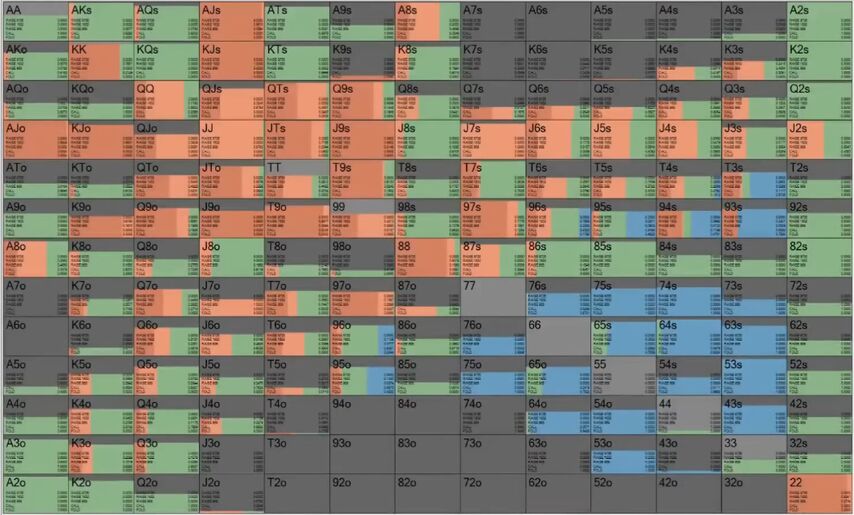
I mentioned a hand like Q6o. The solver believes that there is a call with this hand, but a raise is also possible, because, frankly, you don’t want to call.
Okay, Stefan calls. Let's see the river. I told the solver to choose from several sizings – small, medium and overbet, which was chosen by Linus. Remember how I said that you can only overbet for value with full houses? Solver agrees with me.
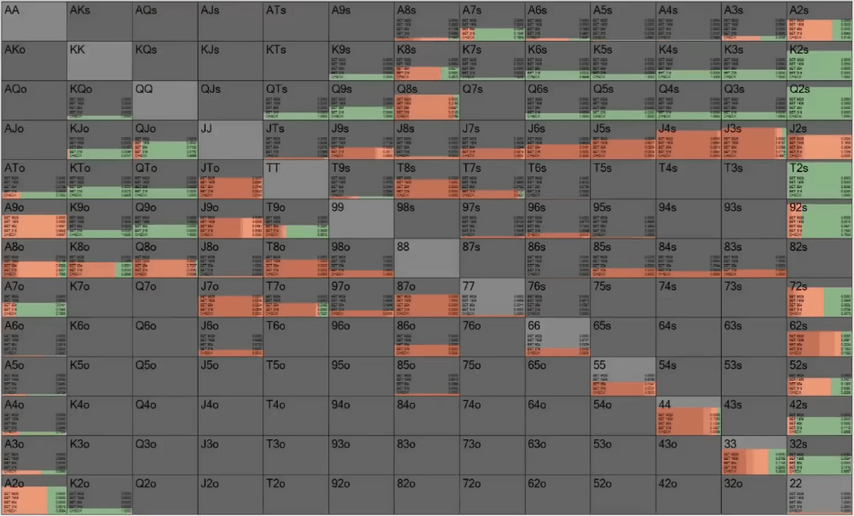
Full house overbets are balanced by bluff overbets with counterfeited pocket pairs and some 2x. Never bluff with K-high or Q-high. You can bet with A-high, but not with such massive sizing. The solver is ready to bet no more than a third of the pot, and the overbet, in it's opinion, loses 1 big blind. It seems that even Linus was not quite right. A slightly surprising mistake.
I want you to pause the video and ask yourself if Linus could have made this mistake intentionally, and if so, what was his motive.
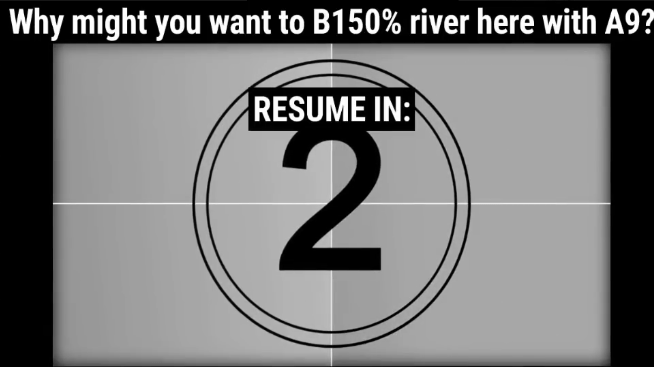
Come up with? In my opinion, the likelihood that he bet a pot and a half specifically because of the opponent is very high. Linus is much stronger than me both as a theoretician and as a practitioner, and if I know that it is not necessary to play GTO like this, he probably knows too. Why did he do it?
Let's think about context. A huge number of hands have completely lost their value – pairs with a deuce, pocket threes, fours, etc., straight draws like and so on. If you start bluffing with everything, you will end up with too many bluffs. In such a situation, an exploitative player like Stefan can dramatically expand his bluff-catching range. Assuming that the opponent will lose control and start over bluffing, he will not randomize and instead of a mixed strategy, he will play a call with all bluffcatchers.
Solver reaction to overbet:
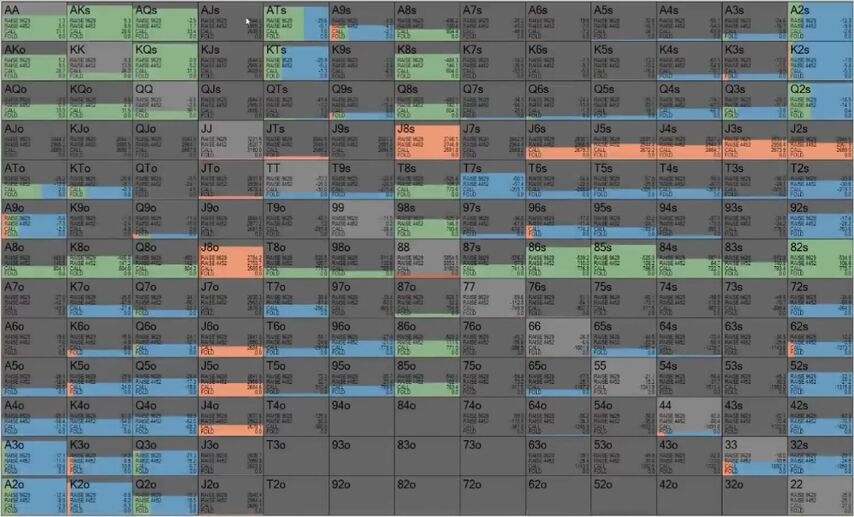
There are not so many mixes, but there are some. For example, with . Why does he always call with ? Because Q is a good blocker: Villain is not bluffing with Q-high. It's interesting that should always fold, and this is also due to the effect of blockers.
All in all, I think Linus suspected that Stefan would call too wide in this spot. And if so, then you can increase the sizing of more borderline hands and hope to get called.
We don't know how Stefan paid off his overbet. Perhaps with . Or – who knows? – With or ! There are a lot of king-high hands in his range, and they don't need to be defended often, because he has enough full houses and overpairs.
In my opinion, a very curious situation that well illustrates the dualism of poker: it seems that Linus made a mistake worth a whole blind, on the other hand, it is quite possible that by doing so he outplayed and destroyed his opponent! (To know for sure, we need information about what Stefan made his call with.)
That's all for today. Personally, I was impressed by how the GTO master showed that he also knew how to play the exploit, like a magician pulling a rabbit out of his hat. I hope you didn't get bored.











